Hiking with your dog can be an incredibly rewarding experience for both you and your furry companion. Not only does it offer an opportunity for you to bond, but it also provides excellent exercise and mental stimulation for your dog. However, hiking with a dog requires some preparation and knowledge to ensure a safe and enjoyable adventure. This guide covers everything you need to know about hiking with your dog, from preparation to trail etiquette.
1. Assess Your Dog’s Fitness Level Before hitting the trails, evaluate your dog’s physical condition. Different breeds have varying levels of endurance and stamina. Ensure your dog is healthy, up-to-date on vaccinations, and has no underlying health issues that might make hiking dangerous.
2. Start with Easy Trails If your dog is new to hiking, start with shorter, easier trails. Gradually increase the difficulty and length of the hikes as your dog builds endurance. This also helps prevent overexertion and allows your dog to get accustomed to the new environment.
3. Gear Up Having the right gear can make your hike more enjoyable and safer:
1. Hydration and Nutrition Just like humans, dogs need to stay hydrated. Bring plenty of water and offer it to your dog regularly. Avoid letting your dog drink from streams or puddles, as they can contain harmful bacteria. Pack high-protein snacks to keep your dog’s energy levels up during the hike.
2. Watch for Signs of Fatigue Pay attention to your dog’s behavior. Signs of fatigue include excessive panting, lagging behind, or laying down frequently. Take regular breaks to let your dog rest and cool down.
3. Trail Etiquette
1. Check the Weather Avoid hiking in extreme heat or cold. Hot pavement or sand can burn your dog’s paws, and cold temperatures can cause hypothermia. If the weather is not ideal, postpone your hike to a safer day.
2. Be Aware of Wildlife Wildlife encounters can be dangerous. Keep your dog on a leash and under control to prevent them from chasing or disturbing wildlife. If you encounter a wild animal, calmly and slowly back away.
3. Know the Signs of Overheating Dogs can overheat quickly, especially in hot weather. Signs of overheating include excessive panting, drooling, lethargy, and red gums. If your dog shows these signs, find shade, offer water, and wet their fur to help cool them down.
1. Check for Ticks and Burrs After the hike, thoroughly check your dog for ticks, burrs, or other foreign objects. Pay special attention to areas like the ears, armpits, and between the toes. Remove any ticks promptly and consult your veterinarian if you find any attached.
2. Clean Their Paws Clean your dog’s paws to remove dirt, mud, or any chemicals they might have walked through. This also gives you a chance to check for cuts or abrasions.
3. Monitor Their Health Keep an eye on your dog’s behavior after the hike. If they seem unusually tired, are limping, or show any signs of distress, contact your veterinarian.
1. Physical Exercise Hiking provides an excellent workout for your dog, helping to maintain a healthy weight and build muscle. Regular physical activity is essential for a dog’s overall health and well-being.
2. Mental Stimulation The sights, sounds, and smells of nature offer a rich sensory experience for your dog, providing mental stimulation that can help reduce boredom and anxiety.
3. Strengthening the Bond Spending time together in nature strengthens the bond between you and your dog. Shared experiences and overcoming challenges on the trail can deepen your connection.
1. Research Dog-Friendly Trails Not all trails are dog-friendly. Research trails in your area to find those that allow dogs. Websites, apps, and local hiking groups can be excellent resources for finding dog-friendly hikes.
2. Consider the Terrain Choose a trail that matches your dog’s fitness level and experience. Avoid trails with steep climbs, loose rocks, or other hazards that might be challenging for your dog.
3. Check the Regulations Some trails have specific regulations for dogs, such as leash laws or restricted areas. Make sure you understand and follow these rules to avoid fines and ensure a positive experience for everyone on the trail.
Hiking with your dog can be a fantastic way to enjoy the great outdoors and stay active together. With proper preparation, attention to safety, and consideration for others on the trail, you and your furry friend can have many enjoyable adventures. Remember, the key to a successful hike is ensuring that both you and your dog are comfortable, safe, and having fun. Happy hiking!
Labrador Retrievers, often simply known as Labs, are one of the most popular dog breeds in the world. Renowned for their friendly nature, intelligence, and versatility, Labradors make excellent companions for families, active individuals, and working professionals. In this guide, we’ll explore the history, characteristics, health, and care needs of Labrador Retrievers.
The origins of the Labrador Retriever can be traced back to the early 19th century in Newfoundland, Canada. Originally known as St. John’s dogs or Lesser Newfoundland dogs, these early Labradors were used by fishermen to help retrieve nets and catch fish that escaped from fishing lines. Their excellent swimming ability and hardworking nature made them indispensable to their owners.
In the early 1800s, the breed was brought to England, where it was refined and developed into the Labrador Retriever we know today. The breed’s name is derived from the Labrador region, which is part of Newfoundland and Labrador in Canada. English aristocrats recognized the potential of these dogs for hunting and retrieving game, and through selective breeding, they enhanced the breed’s natural retrieving instincts, temperament, and appearance.
Labrador Retrievers are medium to large-sized dogs, with males typically standing between 22.5 to 24.5 inches at the shoulder and weighing between 65 to 80 pounds. Females are slightly smaller, standing 21.5 to 23.5 inches and weighing 55 to 70 pounds. They have a strong, muscular build that reflects their working heritage.
Labs come in three standard colors: black, yellow, and chocolate. Their dense, water-resistant double coat is a hallmark of the breed, providing insulation and protection in various weather conditions. Labs are known for their expressive eyes, broad head, and otter-like tail, which helps them steer while swimming.
Labrador Retrievers are famous for their friendly and outgoing nature. They are typically good-natured, eager to please, and highly social dogs. Their intelligence and trainability make them excellent service dogs, therapy dogs, and working dogs in various fields, including search and rescue, detection, and assistance for people with disabilities.
Labs are also known for their playful and energetic disposition. They have a strong desire to be part of family activities and thrive on human interaction. This breed is generally good with children and other pets, making them an ideal choice for families. However, their high energy levels and exuberance can sometimes be overwhelming for very young children or elderly individuals.
Labrador Retrievers have a life expectancy of 10 to 12 years, although some can live longer with proper care. Like all breeds, they are prone to certain health conditions, which prospective owners should be aware of:
Caring for a Labrador Retriever requires commitment to their physical, mental, and emotional well-being. Here are some key aspects of their care:
Labs are high-energy dogs that require regular exercise to stay healthy and happy. They enjoy activities such as walking, running, swimming, and playing fetch. Aim for at least an hour of vigorous exercise daily to keep your Lab fit and prevent boredom-related behaviors, such as chewing and digging.
Labradors are highly trainable due to their intelligence and eagerness to please. Early socialization and obedience training are essential to ensure they develop good manners and are well-adjusted. Positive reinforcement techniques, such as treats and praise, work best with this breed.
Feeding a balanced diet is crucial for maintaining your Lab’s health. Choose high-quality commercial dog food that meets their nutritional needs, and be mindful of portion sizes to prevent obesity. Treats should be given in moderation and factored into their daily calorie intake.
Labs have a short, dense coat that sheds year-round, with heavier shedding during spring and fall. Regular brushing, at least once a week, helps manage shedding and keeps their coat healthy. Labs also require regular dental care, nail trimming, and ear cleaning to prevent infections and other health issues.
Regular veterinary check-ups are essential to monitor your Lab’s health and catch any potential problems early. Vaccinations, parasite prevention, and routine screenings for common genetic conditions are crucial components of their healthcare regimen.
Labrador Retrievers adapt well to various living situations, as long as their exercise and socialization needs are met. They can thrive in both urban and rural environments, provided they have ample opportunities for physical activity and mental stimulation. Labs are known for their love of water and enjoy swimming, making them ideal companions for outdoor adventures.
Because of their friendly and social nature, Labs should not be left alone for long periods. They can develop separation anxiety if deprived of human interaction and mental stimulation. Providing toys, puzzles, and interactive games can help keep them occupied when you are not around.
Labradors generally get along well with other dogs and pets. Their gentle and friendly nature makes them less likely to exhibit aggressive behavior. However, early socialization with other animals is important to ensure harmonious relationships.
Labs are excellent family dogs. Their patience, playfulness, and protective instincts make them wonderful companions for children. They often form strong bonds with their human family members and enjoy participating in family activities. Supervision is necessary when Labs interact with very young children to prevent accidental knocks or rough play.
Labrador Retrievers are a versatile, intelligent, and affectionate breed that brings joy and companionship to countless families around the world. Their friendly nature, adaptability, and eagerness to please make them an excellent choice for a wide range of owners. By providing proper care, exercise, and training, you can ensure a happy and healthy life for your Labrador Retriever. Whether as a family pet, working dog, or loyal companion, Labs continue to capture hearts and enrich lives with their unwavering devotion and charm.
As a pet owner, one of the scariest moments is seeing your furry friend in pain. One common issue that can cause significant discomfort for dogs is a broken nail. While it might seem minor, a broken nail can lead to severe pain, bleeding, and infection if not properly treated. Here’s a comprehensive guide on what to do when your dog breaks their nail.
The first step in addressing a broken nail is recognizing the signs. Dogs are typically very active, and a broken nail can occur during play, while running, or even from simple activities like digging. Here are some signs that your dog may have a broken nail:
When you notice that your dog has a broken nail, it’s crucial to act quickly to minimize pain and prevent infection. Here are the immediate steps you should take:
After taking initial steps, it’s essential to follow up with proper care to ensure your dog’s paw heals completely. Here’s what you should do:
Prevention is always better than cure. While it’s impossible to prevent all accidents, you can take steps to minimize the risk of nail injuries:
A broken nail can be a painful and stressful experience for both you and your dog. By acting promptly and following the proper steps, you can ensure your dog’s injury heals quickly and reduces the risk of complications. Always keep a first-aid kit handy for such emergencies and consult your veterinarian when in doubt. With proper care and attention, your furry friend will be back to their happy, playful self in no time.
As pet owners, we all want the best for our furry friends. Providing them with a balanced diet is crucial to their health and well-being. However, not all human foods are safe for dogs. In fact, some can be downright toxic. Understanding which foods pose a risk can help prevent accidental poisoning and ensure your dog lives a long, healthy life. Here is a comprehensive guide on foods that are toxic to dogs.
Chocolate is one of the most well-known toxic foods for dogs. It contains theobromine, a compound that dogs metabolize much more slowly than humans. Even small amounts can cause serious health problems. Symptoms of chocolate poisoning include vomiting, diarrhea, rapid breathing, increased heart rate, and seizures. Dark chocolate, baking chocolate, and cocoa powder are particularly dangerous due to their high theobromine content.
Grapes and raisins can cause acute kidney failure in dogs. The exact substance in grapes and raisins that causes toxicity is still unknown, but even a small amount can be harmful. Symptoms of grape or raisin poisoning include vomiting, lethargy, and depression within a few hours of ingestion. This can progress to kidney failure, which can be fatal.
Onions, garlic, and other members of the allium family (such as chives and leeks) can cause damage to a dog’s red blood cells, leading to anemia. Both raw and cooked forms are toxic, and symptoms may include weakness, vomiting, and breathing problems. The effects can be delayed, so it might take a few days for symptoms to appear.
Xylitol is a sugar substitute found in many sugar-free products like gum, candy, baked goods, and toothpaste. In dogs, xylitol can cause a rapid release of insulin, leading to hypoglycemia (low blood sugar). Symptoms include vomiting, loss of coordination, and seizures. In severe cases, xylitol poisoning can lead to liver failure and death.
Alcohol affects dogs much the same way it affects humans, but it takes much less to cause serious harm. Even small amounts of alcohol can lead to ethanol poisoning, causing symptoms such as vomiting, diarrhea, coordination problems, depression, difficulty breathing, and even coma or death. Never give your dog alcohol, and be cautious about foods that might contain it, such as certain desserts.
Caffeine is a stimulant found in coffee, tea, cola, and energy drinks. It can cause restlessness, rapid breathing, heart palpitations, muscle tremors, and seizures in dogs. Caffeine poisoning can be fatal, so it’s important to keep all caffeinated products out of reach of your pets.
Macadamia nuts are highly toxic to dogs, though the exact mechanism of toxicity is unknown. Symptoms of macadamia nut poisoning include weakness, depression, vomiting, tremors, and hyperthermia. These symptoms typically appear within 12 hours of ingestion and can last up to 48 hours. While macadamia nut poisoning is rarely fatal, it can cause significant discomfort and health issues for your dog.
Avocados contain a substance called persin, which can be toxic to dogs in large quantities. While the flesh of the avocado is generally safe, the pit, skin, and leaves contain higher levels of persin and should be avoided. Symptoms of avocado poisoning include vomiting, diarrhea, and abdominal pain.
While not toxic per se, dairy products can cause problems for some dogs. Many dogs are lactose intolerant, meaning they lack the enzyme lactase needed to digest lactose, the sugar in milk. This can lead to gastrointestinal upset, including diarrhea and vomiting. Cheese and yogurt contain less lactose than milk but should still be given sparingly.
Cooked bones, especially poultry bones, can splinter and cause blockages or tears in a dog’s digestive system. Raw bones are less likely to splinter, but they can still pose a choking hazard or cause injury to a dog’s mouth and teeth. If you want to give your dog bones, consult with your veterinarian for the safest options.
While some dog owners advocate for a raw diet, raw meat and fish can contain bacteria like Salmonella and E. coli, which can cause food poisoning. Certain fish, like salmon and trout, can carry parasites that cause a condition known as “salmon poisoning disease,” which can be fatal if not treated. If you choose to feed your dog raw meat or fish, ensure it is from a reputable source and follow proper food handling guidelines.
Too much salt can lead to excessive thirst and urination, and in severe cases, sodium ion poisoning. Symptoms include vomiting, diarrhea, depression, tremors, elevated body temperature, and seizures. Avoid feeding your dog salty snacks like chips, pretzels, and salted popcorn.
Pits and seeds from fruits like apples, cherries, plums, peaches, and apricots contain cyanogenic glycosides, which can release cyanide when ingested. Symptoms of cyanide poisoning include vomiting, heavy panting, and shock. Always remove pits and seeds before giving fruit to your dog.
Unbaked yeast dough can expand in a dog’s stomach, causing bloating and potentially life-threatening gastric dilation-volvulus (GDV). Additionally, the fermentation of yeast can produce alcohol, leading to ethanol poisoning. If your dog ingests yeast dough, contact your veterinarian immediately.
Feeding your dog fat trimmings from meat can lead to pancreatitis, a painful and potentially life-threatening condition. As mentioned earlier, cooked bones can splinter and cause internal injuries. It’s best to avoid giving your dog these types of food.
Keeping your dog safe involves being mindful of what they eat. While this list covers many common toxic foods, it is not exhaustive. If you suspect your dog has ingested something harmful, contact your veterinarian or an emergency pet poison hotline immediately. Prevention is key, so always store food out of your dog’s reach and educate anyone who might be feeding your pet about these dangers. By staying informed and vigilant, you can help ensure your dog enjoys a long, healthy, and happy life.
As the summer heat intensifies, it’s crucial to pay extra attention to our furry companions. Dogs are especially vulnerable to dehydration during the warmer months, and ensuring they stay hydrated is vital for their health and well-being. In this comprehensive guide, we’ll explore effective strategies to prevent dog dehydration and keep your pet safe and comfortable throughout the summer.
Dehydration occurs when a dog’s body loses more fluids than it takes in, disrupting normal bodily functions. Dogs regulate their body temperature through panting, which can lead to fluid loss. Without adequate hydration, they can quickly become dehydrated, a condition that can be life-threatening if not addressed promptly.
Recognizing the signs of dehydration is the first step in preventing it. Common symptoms include:
Proper hydration is essential for your dog’s overall health. Water is vital for digestion, circulation, and regulating body temperature. During the summer, the risk of dehydration increases due to higher temperatures and increased physical activity. By taking proactive measures, you can ensure your dog remains healthy and happy.
Preventing dog dehydration in summer requires a combination of vigilance, care, and proactive measures. Always provide fresh water, offer shade, and avoid excessive exercise during peak heat. By recognizing the signs of dehydration and taking steps to prevent it, you can help your dog enjoy a safe and enjoyable summer.
Remember, a well-hydrated dog is a happy dog. Keep these tips in mind and enjoy the warm weather with your furry friend, knowing you’re taking the necessary steps to keep them healthy and hydrated.
Dogs are known for their loyalty, companionship, and playful nature. They are our best friends and deserve the utmost care and attention. One crucial aspect of a dog’s well-being that often goes unnoticed is the health of their paw pads. These sensitive areas play a vital role in their daily activities, such as walking, running, and playing. Therefore, it is essential for dog owners to understand the best ways to keep their dogs’ pads healthy.
Firstly, regular inspection and cleaning of your dog’s paw pads are crucial for maintaining their overall health. Paw pads can accumulate dirt, debris, or even small objects like thorns or glass fragments during walks or outdoor activities. These foreign bodies can cause discomfort or even lead to infections if left untreated. Therefore, it is recommended to inspect your dog’s paws after each walk or play session.
To clean your dog’s paw pads effectively, start by gently wiping them with a damp cloth or using pet-friendly wet wipes specifically designed for this purpose. Be sure to remove any visible dirt or debris between the toes as well. Additionally, trimming the hair around the paw pads can prevent matting and further accumulation of dirt.
Another important aspect of maintaining healthy paw pads is moisturizing them regularly. Just like human skin needs hydration to stay healthy and supple, so do dogs’ paw pads. Dry and cracked paw pads can be painful for dogs and make walking uncomfortable.
To moisturize your dog’s paws effectively, consider using specialized pet-safe products such as paw balms or creams available in pet stores or recommended by veterinarians. These products contain natural ingredients like shea butter or coconut oil that provide moisture while also protecting against harsh weather conditions. It is worth noting that excessive moisture can also be detrimental to your dog’s pad health as it may lead to maceration (softening) of the skin between the toes. Therefore, it is crucial to strike a balance and avoid over-moisturizing.
In addition to regular cleaning and moisturizing, providing proper protection for your dog’s paw pads is essential, especially during extreme weather conditions. Extreme heat or cold can cause burns or frostbite on their sensitive paws. In hot weather, avoid walking your dog on scorching pavement or sand as it can quickly become too hot for their paws to handle. Instead, opt for grassy areas or consider using protective booties.
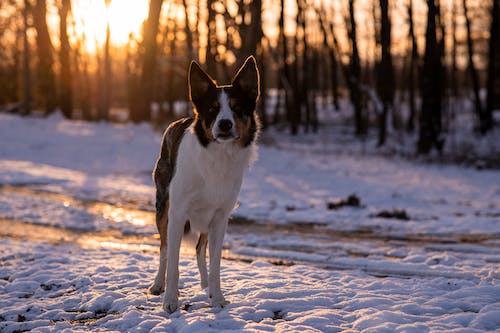
During winter months, salt used to melt ice on sidewalks can be harmful to dogs’ paw pads. It is advisable to rinse their paws with warm water after walks and dry them thoroughly. Applying a protective balm before going outside can also provide an extra layer of defense against the cold.
Lastly, maintaining a healthy diet and weight for your dog contributes significantly to the overall health of their paw pads. Obesity puts additional strain on their joints and paws, leading to increased wear and tear. A balanced diet rich in essential nutrients helps maintain healthy skin and strong paw pads.
Keeping our dogs’ paw pads healthy should be a priority for every responsible pet owner. Regular inspection and cleaning, moisturizing with pet-safe products, providing protection during extreme weather conditions, and maintaining a healthy diet are all crucial steps in ensuring the well-being of our furry friends’ precious paws. By following these guidelines diligently, we can ensure that our loyal companions enjoy happy and pain-free adventures throughout their lives.
Dogs are not just pets; they are members of our families. As responsible pet owners, it is our duty to provide them with the care and attention they deserve. One crucial aspect of their well-being is grooming. Regular grooming not only keeps your dog looking clean and healthy but also helps prevent various health issues such as skin infections, matting, and parasites. However, finding the best dog groomer can be a daunting task. Here are some tips to help you find the perfect groomer for your furry friend.
Firstly, do your research. Start by asking for recommendations from friends, family members, or even your veterinarian. These individuals may have firsthand experience with local groomers and can provide valuable insights into their services and reputation. Additionally, take advantage of online resources such as review websites or social media groups dedicated to pet care. Reading reviews from other pet owners can give you a better idea of what to expect from different groomers in your area.
Once you have gathered a list of potential groomers, it’s time to visit their facilities in person. A reputable dog groomer should have a clean and well-maintained salon that adheres to proper hygiene standards. Take note of the overall cleanliness of the facility as well as the condition of the equipment used during grooming sessions.
During your visit, don’t hesitate to ask questions about their grooming techniques and practices. A skilled groomer should be knowledgeable about different breeds’ specific needs and be able to address any concerns or special requirements your dog may have. Inquire about their experience in handling dogs with similar coats or temperaments as yours.
Another important factor to consider is how the groomer interacts with dogs under their care. Observe how they handle other dogs during grooming sessions — do they show patience and gentleness? Dogs can become anxious or stressed during grooming if not handled properly, so it’s essential that the groomer knows how to create a calm and safe environment for your pet.
Apart from their grooming skills, it’s crucial to ensure that the groomer is properly trained and certified. Look for certifications or qualifications displayed in their salon or ask about their training background. A well-trained groomer will have a solid understanding of canine anatomy, skin conditions, and common health issues that may arise during grooming.
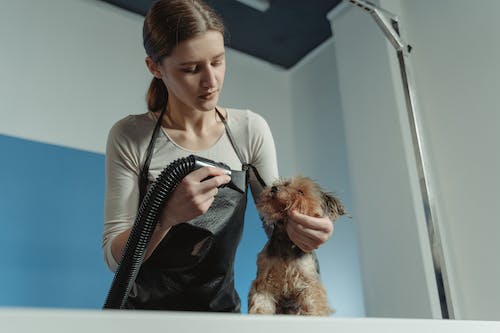
In addition to technical skills, good communication is key when choosing a dog groomer. A professional groomer should be able to listen attentively to your requests and preferences while also providing expert advice on maintaining your dog’s coat and overall health. They should be open to discussing any concerns you may have and be willing to work with you to achieve the desired results.
Lastly, consider the overall experience of taking your dog to the groomer. Pay attention to factors such as location, availability of appointments, pricing, and additional services offered. It’s essential that the groomer’s schedule aligns with yours so that you can maintain regular grooming sessions for your pet.
Finding the best dog groomer requires time and effort but is well worth it for your furry friend’s well-being. By doing thorough research, visiting facilities in person, asking questions about techniques and training, observing interactions with dogs, ensuring proper certifications are in place, prioritizing good communication skills, and considering convenience factors — you can find a trusted professional who will keep your dog looking their best while ensuring their comfort throughout the grooming process. Remember that finding a reliable dog groomer is an investment in your pet’s health and happiness!
Dogs are often referred to as man’s best friend, known for their loyalty, companionship, and boundless energy. However, not all dogs possess the same level of enthusiasm and vigor. Some breeds are more inclined towards a laid-back lifestyle, preferring relaxation over rigorous exercise. These most laidback breeds of dogs have a reputation for being low-energy and content with a leisurely pace of life.
One such breed is the Basset Hound. With its droopy eyes and long ears, this breed is notorious for its calm demeanor. Basset Hounds were originally bred for hunting small game but have since become popular as family pets due to their gentle nature. Despite their hunting background, they would rather spend their days lounging on the couch than chasing after prey. Their short legs and heavy build contribute to their lackadaisical demeanor.
Another breed that falls into the category of easy-going dogs is the English Bulldog. This iconic breed is known for its stocky build, wrinkled face, and distinctive underbite. Bulldogs have a calm and easygoing temperament that makes them ideal companions for those seeking a relaxed lifestyle. They are content with short walks or even just pottering around the house all day long.

The Cavalier King Charles Spaniel is yet another breed that can be considered one of the most laidback among dogs. These small spaniels are affectionate and friendly but also possess an innate calmness that sets them apart from other breeds in terms of energy levels. While they enjoy occasional playtime or short walks, Cavaliers are more than happy to curl up on a soft cushion or lap for hours on end.
Moving on to larger breeds, the Great Dane deserves mention as one of the most relaxed giants in the dog world. Despite its imposing size, this gentle giant has surprisingly low energy levels compared to other large breeds. Great Danes may require a short burst of exercise, but they are more than willing to spend the majority of their time lounging around the house. Their calm and relaxed nature makes them excellent companions for those who prefer a slower pace of life.
Lastly, the French Bulldog is renowned for its easy-going personality. These small, muscular dogs have become increasingly popular in recent years due to their adorable appearance and friendly temperament. However, French Bulldogs are not known for their athleticism or high energy levels. They are perfectly content with short walks and indoor playtime, making them an ideal choice for apartment dwellers or individuals with limited space.
While these breeds may be considered “low energy” dogs compared to their more active counterparts, it is important to note that all dogs require some level of exercise and mental stimulation to maintain good health and prevent behavioral issues. Regular walks, play sessions, and engaging activities should still be incorporated into their daily routines.
Dogs are incredible creatures that bring joy, companionship, and unconditional love into our lives. As responsible pet owners, it is our duty to ensure that our furry friends lead happy and fulfilling lives. One crucial aspect of a dog’s well-being is preventing boredom. Just like humans, dogs can become bored if they lack mental stimulation and physical activity. In this blog, we will explore various strategies to prevent a dog from being bored.
Firstly, regular exercise is essential for keeping a dog mentally and physically stimulated. Dogs are naturally active animals that require daily exercise to stay healthy and happy. Depending on the breed and age of your dog, the amount of exercise needed may vary. However, as a general rule of thumb, dogs should be taken for walks at least twice a day for 30 minutes each time. This not only provides them with physical activity but also allows them to explore their surroundings and engage their senses.
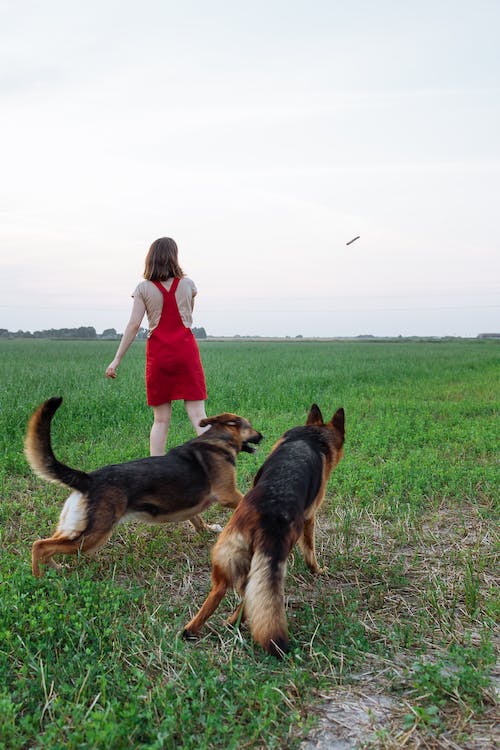
In addition to walks, engaging in playtime activities with your dog is an excellent way to prevent boredom. Dogs thrive on interactive play sessions with their owners or other dogs. Playing fetch in the park or engaging in tug-of-war games can provide both mental stimulation and physical exercise for your furry friend. It is important to choose toys that are suitable for your dog’s size and breed to ensure safety during playtime.
Another effective method of preventing boredom in dogs is through puzzle toys or treat-dispensing toys. These types of toys challenge your dog’s problem-solving skills while rewarding them with treats or food when they successfully solve the puzzle or manipulate the toy correctly. Not only do these toys keep your dog entertained for extended periods but they also help prevent destructive behavior caused by boredom.
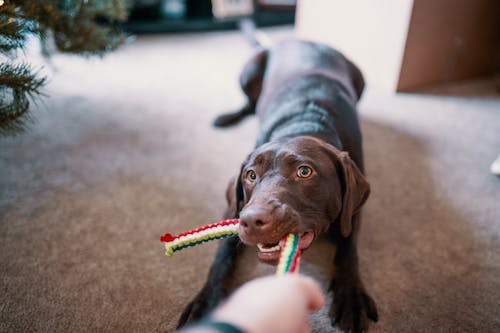
Furthermore, socialization plays a vital role in preventing boredom in dogs. Dogs are social animals that thrive on interaction with other animals and humans alike. Regular visits to the local dog park or arranging playdates with other friendly dogs can provide your pet with the social stimulation they need. Additionally, enrolling your dog in obedience classes or training sessions not only helps them learn essential skills but also provides mental stimulation and strengthens the bond between you and your furry companion.
Mental stimulation is just as important as physical exercise for preventing boredom in dogs. Engaging in activities that challenge their minds can keep them entertained and prevent destructive behavior caused by boredom. Simple activities such as hiding treats around the house or teaching them new tricks can provide mental stimulation for your dog. There are also interactive puzzle games available specifically designed to challenge a dog’s cognitive abilities.
Lastly, it is crucial to establish a routine for your dog. Dogs thrive on predictability and structure, so having a consistent daily routine can help prevent boredom. Feeding, walking, playtime, and rest should all be scheduled at regular intervals throughout the day. This not only provides mental stimulation but also gives your dog a sense of security and stability.
Preventing boredom in dogs requires a combination of physical exercise, mental stimulation, socialization, and establishing routines. By incorporating these strategies into our daily lives as responsible pet owners, we can ensure that our beloved companions lead happy and fulfilling lives. Remember that each dog is unique, so it is essential to understand their individual needs and preferences when implementing these preventive measures against boredom.
Dog hair can be a persistent problem for pet owners. It seems to find its way into every nook and cranny of our homes, clinging to furniture, carpets, and clothing. While it may seem like an endless battle, there are several effective methods for cleaning up dog hair that can make the task more manageable.
One of the most efficient ways to tackle dog hair is by using a vacuum cleaner specifically designed for pet hair removal. These vacuums often come with specialized attachments that can easily pick up stubborn hairs from upholstery and carpets. Additionally, they have powerful suction capabilities that can effectively remove loose hairs from surfaces. When using a vacuum cleaner, it is important to go over each area thoroughly and in different directions to ensure all the hair is picked up.
Another effective method for removing dog hair is by using lint rollers or sticky tape. These tools are particularly useful on clothing or fabric surfaces where vacuuming may not be as effective. Simply roll the lint roller over the surface, pressing down firmly to pick up any loose hairs. Alternatively, wrap sticky tape around your hand with the adhesive side facing outwards and pat it gently on the surface where dog hair is present. This method works well on smaller areas or when you are in a hurry.
Regular grooming of your dog can also help reduce shedding and minimize the amount of loose hair in your home. Brushing your dog’s coat daily will remove loose hairs before they have a chance to fall off onto furniture or floors. Additionally, regular bathing will keep your dog’s coat clean and healthy, reducing excessive shedding.
To prevent dog hair from accumulating on furniture or bedding, consider using washable covers or throws that can easily be removed and cleaned when necessary. This will not only protect your furniture but also make cleaning up easier as you can simply toss them into the washing machine.
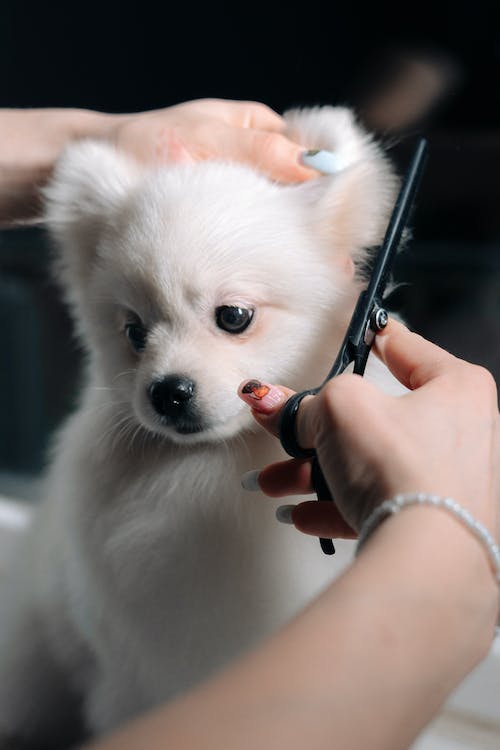
In addition to these methods, there are some preventive measures you can take to minimize the amount of dog hair in your home. Regularly washing and vacuuming your dog’s bedding will help remove any loose hairs that may have accumulated. Additionally, keeping your dog off furniture or designating specific areas where they are allowed can help contain the spread of hair.
It is important to note that some dogs shed more than others, and certain breeds are known for their excessive shedding. If you have a breed that sheds heavily, it may be worth considering professional grooming services or investing in a high-quality pet hair removal tool. Cleaning up dog hair can be a challenging task for pet owners. However, by using the right tools and techniques, it is possible to keep your home free from excessive shedding. Regular grooming, vacuuming with specialized pet hair attachments, using lint rollers or sticky tape, and employing preventive measures such as washable covers can all contribute to a cleaner living environment. With these strategies in place, you can enjoy the company of your furry friend without constantly battling against their shedding.
For years, dogs have become more than just pets; they have become beloved members of our families and trusted companions. As we finish the year 2023, we would like to share our list of what we feel to be the Top-5 dog breeds of the year. These pups all have remarkable qualities and have proven to be the best of the best.
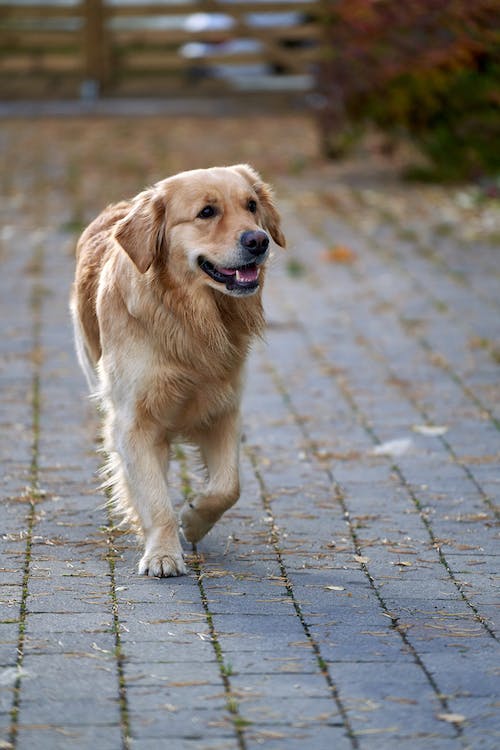
There’s a reason why this breed, year after year, continues to rank so high in popularity. The Labrador Retriever is an A+ breed of dog that has an incredibly loving personality and a warm temperament. They are very social dogs that thrive with attention, love, and one-on-one time. They enjoy a walk in the park as much as they enjoy a nap on the couch with their owner. They are smart and train well and truly make an amazing family pet.

Who doesn’t love the Bulldog? Not only are they handsome pups, but very lovable and caring dogs. They do well with children, are excited to greet you when you come home, and are happy when you are. This breed’s popularity is what it is today thanks to its long history of making a great family pet and should be one to consider if you are looking to add a puppy to your family.
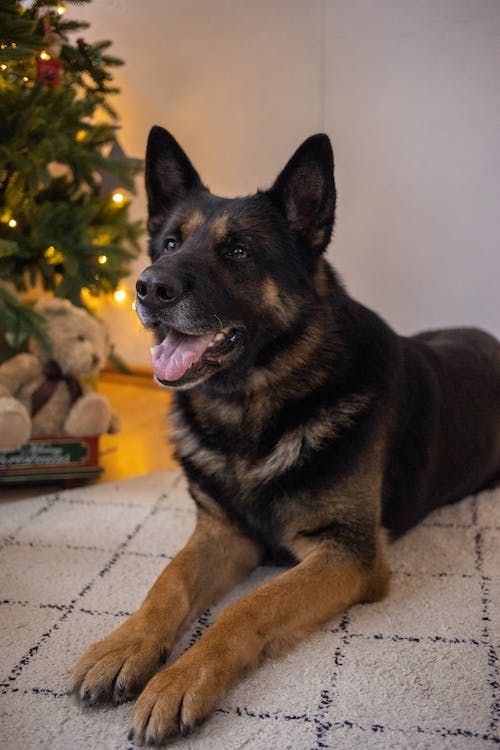
This breed is a very loyal, protective, and caring dog. They make a great fit with families of all dynamics and love attention. They look forward to exploring the great outdoors and thanks to their smarts, generally train with ease. For years this breed has been a family favorite for many reasons. The German Shepherd is an outstanding dog and one your whole family will love.
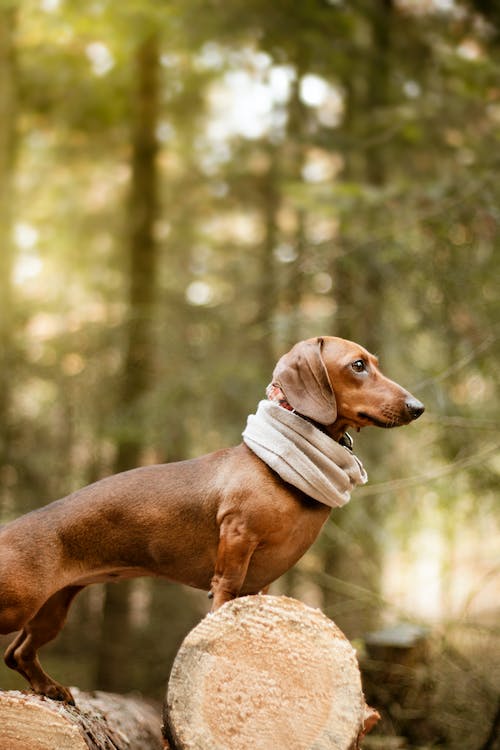
This breed is a playful, energetic, and lovable dog. They interact very well with children and other pets in the household and are generally very low maintenance. They love learning new tricks and have the perfect balance of energy. They are not overly rambunctious but love to play. They have sweet and warm demeanors and make fantastic pets.
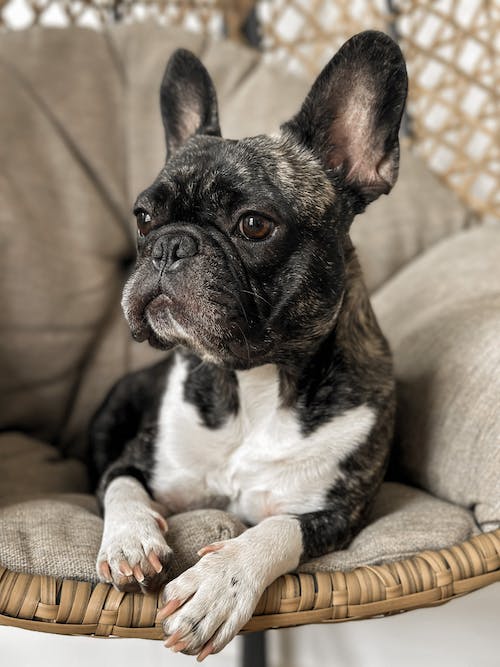
This breed has a very easy-going and lowkey temperament. They absolutely love nap time with their family, do great with children, and get along well with other pets in the home. They are friendly dogs that enjoy your attention. This breed has been very popular across the US for years and will continue to into the year 2024 due to all of its great qualities.
Dog training is an essential part of owning a pet, ensuring they are well-behaved, obedient, and happy. To effectively train your furry friend, it’s crucial to understand the basics of dog training.
– Establish clear communication with your dog.
– Use consistent verbal cues and body language.
– Dogs respond best to positive reinforcement.
– Reward your pup with treats or praise when they exhibit desired behaviors. – Don’t forget, your body language is very important while communicating with your dog.
Set a routine for training sessions and stick to it. Short and frequent sessions work best as dogs have limited attention spans. Patience is essential during the training process as dogs learn at their own pace. Lastly, remember that every dog is unique; tailor your training approach to suit their individual needs and personality traits. By grasping these fundamental principles of dog training, you will be better equipped to establish a strong bond with your canine companion and achieve successful results in their behavior development.
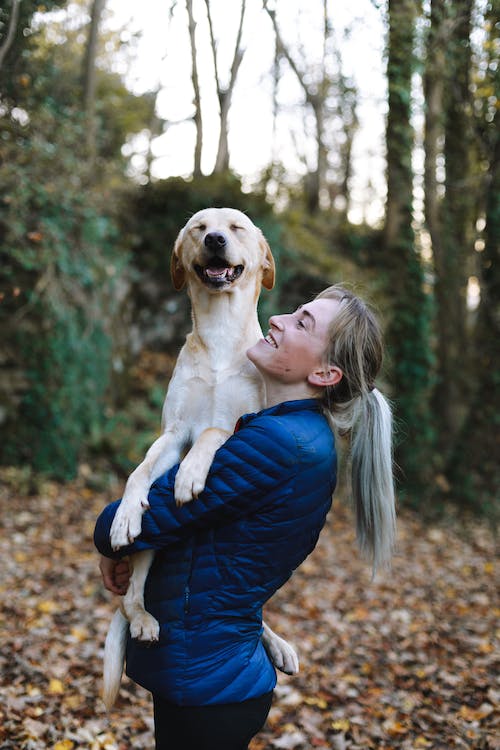
Building a strong and positive relationship with your dog is essential for successful training. It is important to create an environment of trust and respect that encourages cooperation and understanding between you and your furry companion. To achieve this, start by spending quality time together, engaging in activities that both of you enjoy.
Regular exercise not only keeps your dog physically fit but also helps release pent-up energy, reducing behavioural issues. Avoid punishment or harsh methods as they can damage the trust between you both.
When it comes to training your dog, initial basic commands lay the foundation for a well-behaved and obedient pet. Commands such as sit, lay, paw, and wait allow your dog to recognize commands. In time your dog will build up to more complicated commands that require more effort on his part.
When it comes to training our furry companions, addressing common behavior issues is essential for a harmonious household. One prevalent issue faced by dog owners is excessive barking. To tackle this problem, it is crucial to identify the underlying cause, such as boredom or anxiety, and address it appropriately through mental stimulation, exercise, and positive reinforcement techniques.
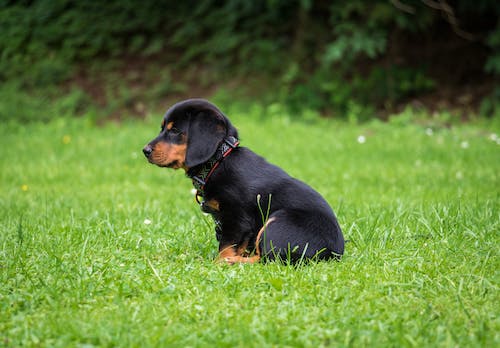
Ever hear of the saying “you can’t teach an old dog new tricks?” Well, you can, however, it is easier to teach a puppy new tricks because they don’t have many bad habits yet. Start training very basic commands at a young age and the trickier and more complicated commands will be easier for them to learn as they mature.
Training your dog is something that takes time and patience. You need to remember; your dog is happy when you are and does not want to disappoint you. Being patient and positive will allow better long-term results. A little training each and everyday will go a long way!